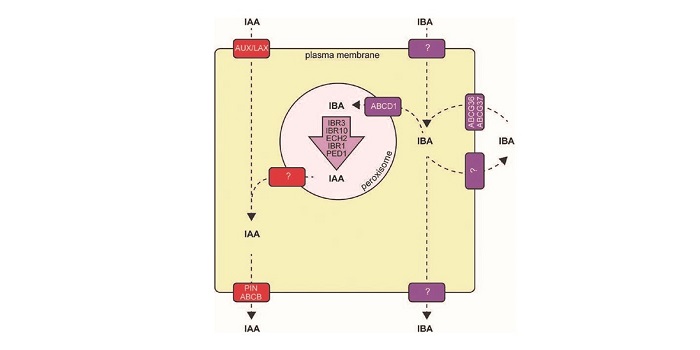
Review: Roles for IBA-derived auxin in plant development ($)
Blog, Plant Science Research Weekly, Research, Research BlogAuxin biosynthesis is a two-step process: First, tryptophan is converted to indole-3-pyruvic acid (IPyA) through the activity of the TAA1 (TRYPTOPHAN AMINOTRANSFERASE OF ARABIDOPSIS1) family of aminotransferase enzymes. IPyA is finally converted to IAA (Indole Acetic Acid) by YUCCA family of flavin…
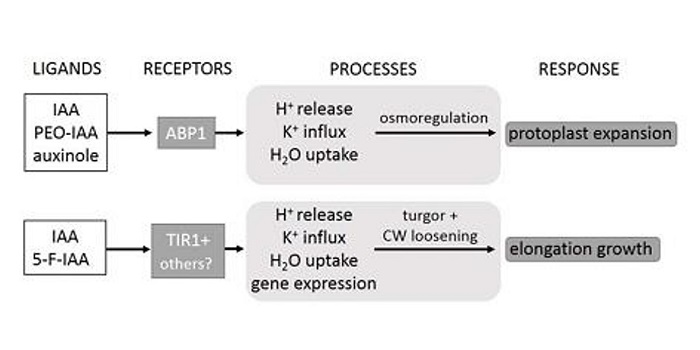
Protoplast swelling and hypocotyl growth depend on different auxin signaling pathways ($)
Blog, Plant Science Research Weekly, Research, Research BlogAuxin was the first phytohormone to be discovered and it has been found to have a role in nearly every aspect of plant growth and development. Auxin biology is multi-layered, as you will see in the following summaries. Auxin is regulated at the level of biosynthesis, different receptors, and domain segregation.…
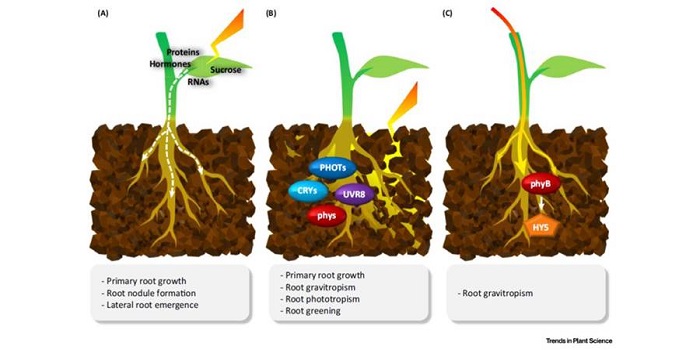
Review: Multiple routes of light signaling during root photomorphogenesis
Blog, Plant Science Research Weekly, Research, Research BlogLight response research in plants has traditionally focused on the shoot, but recent studies have revealed that roots are also light responsive. Lee et al. address the why and how of root photomorphogenesis. They review three ways that light is perceived in roots: via mobile signals from the shoot, direct…
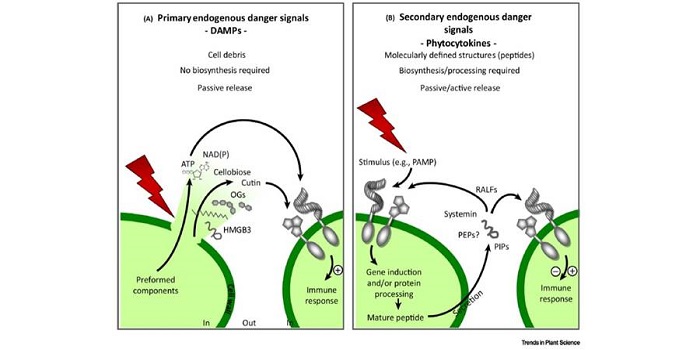
Review: Sensing danger – key to activating plant immunity
Blog, Plant Science Research Weekly, Research, Research BlogThe first step in defending yourself is recognizing that you need to defend yourself. Gust et al. review the mechanisms through which plants sense danger, drawing parallels to similar mechanisms in animals. They define three categories of danger signals. Exogenous signals are “non-self” signals,…

Root phonotropism: Early signalling events following sound perception in Arabidopsis roots
Blog, Plant Science Research Weekly, Research, Research BlogPlants can hear. We know plants respond to touch, can perceive day and night, and respond to volatile compounds, water and nutrients. Moreno et al. studied root phonotropism (not phototropism). They showed that roots of Arabidopsis plants can perceive and respond to sound waves. Arabidopsis roots grew…

Review. Fine-tuning timing: Natural variation informs the switch to flowering in Arabidopsis thaliana ($)
Blog, Plant Science Research Weekly, Research, Research BlogThe transition from vegetative growth to a flower-producing reproductive state is highly regulated by environmental cues. The model plant Arabidopsis thaliana has a wide distribution throughout different habitats, so each accession has different adaptations strategies. One of the major factors that varies…
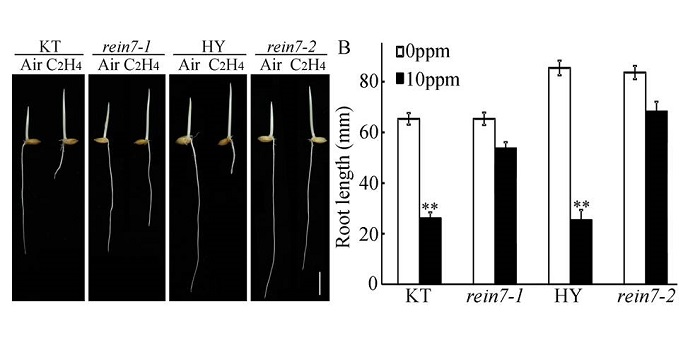
OsEIL1 affects auxin biosynthesis in ethylene-inhibited rice root elongation
Blog, Plant Science Research Weekly, Research, Research BlogThe role of crosstalk between auxin and ethylene in primary root development has been studied in the dicot model plant Arabidopsis thaliana, but is less well understood in monocots. Through a genetic screen for roots that elongate in the presence of ethylene , Qin, Zhang et al. identified a mutant rice…
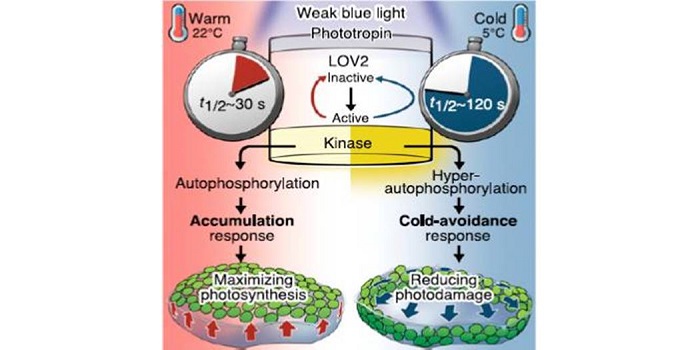
Phototropin perceives temperature based on the lifetime of its photoactivated state
Blog, Plant Science Research Weekly, Research, Research BlogAlthough plants clearly perceive and respond to changes in temperature, it has not always been clear how they perceive temperature and its changes. Evidence for temperature sensing through membrane fluidity, protein stability and, more recently, the reversion of phytochrome to its inactive form has been…
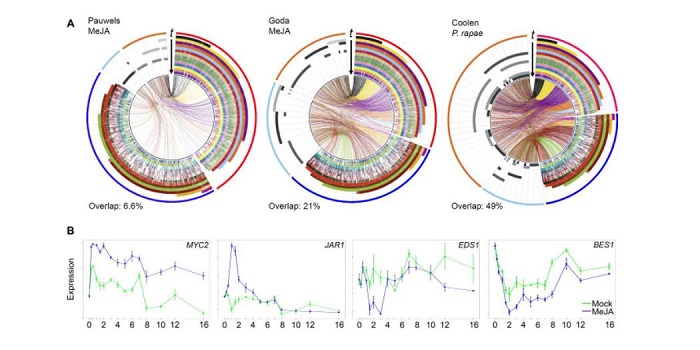
Architecture and dynamics of the jasmonic acid gene regulatory network
Blog, Plant Science Research Weekly, Research, Research BlogJasmonic acid (JA) and its derivatives including methyl jasmonate (MeJA) mediate diverse responses to wounding and herbivory and also help to control the growth-defense trade off. JA’s core signaling components have mainly been identified through genetics approaches in Arabidopsis, but gaps remain…

